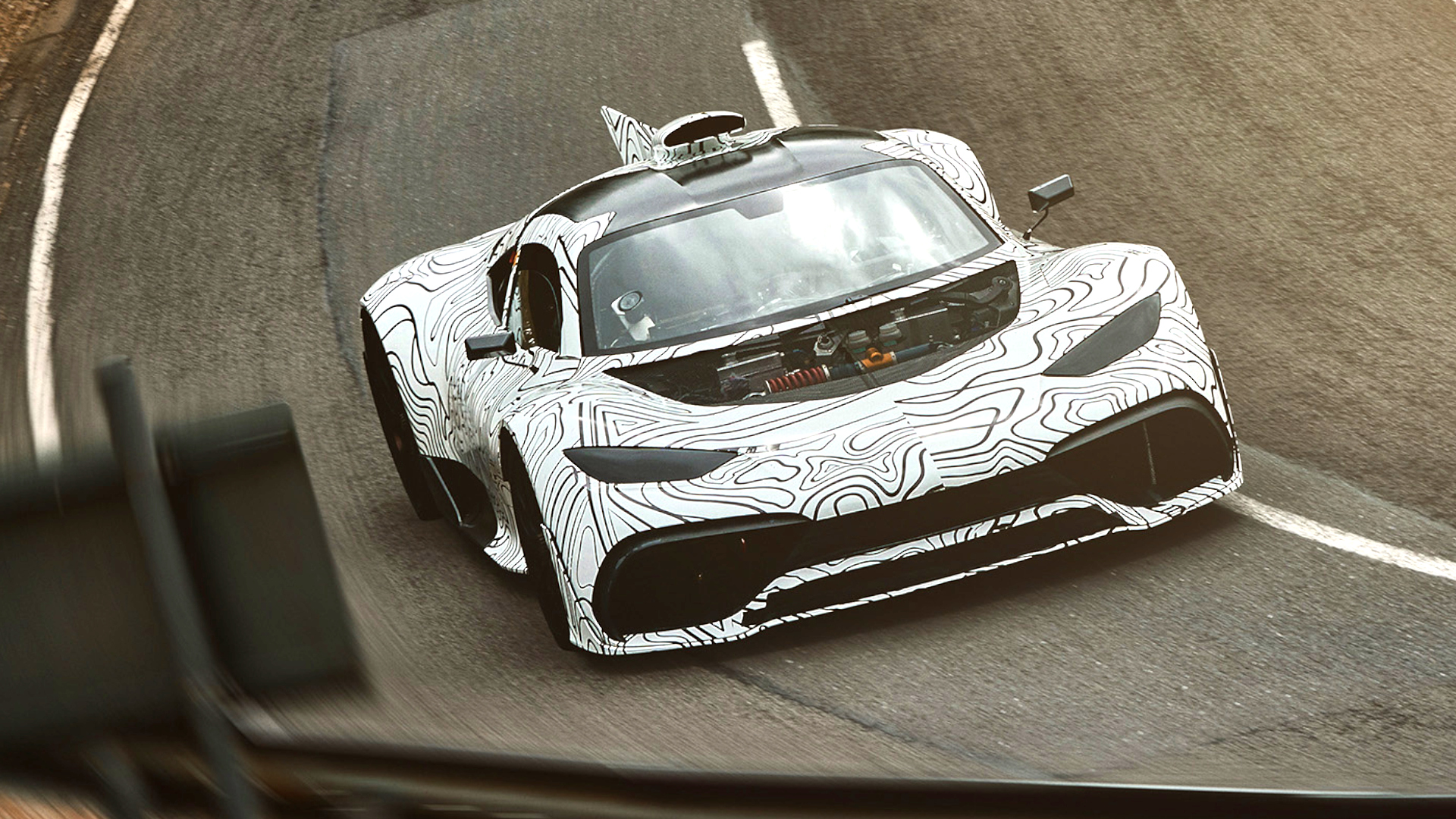

The Mercedes-AMG Project One has been a long time coming. First announced in 2016, it’s faced several delays as engineers have struggled to make a Formula One engine work in a roadgoing application. Mercedes-Benz CEO Ola Källenius has since joked that the company’s board may have been “drunk” when approving the project, as reported by Autocar.
More news on the car is coming “in a couple of weeks” according to Källenius, who spoke to investors on the topic last week. Responding to a question on the model’s expected arrival, the Mercedes CEO cracked wise about the difficulty of the project. “The team at AMG and the High Performance Powertrain Formula 1 arm came to us about four years ago and said ‘we’ve got a great idea, let’s put a Formula 1 engine into a road car’” said Källenius, adding “I will have to go back to check the meeting minutes, but I’m sure we were drunk when we said yes.”
The Project One was originally slated for delivery in 2019 before difficulties in development led to delays. The vehicle is set to feature a hybrid 1.6-liter V6 adapted from the Mercedes team’s 2016 Formula 1 entry, good for 748 horsepower on its own. Paired with an electric motor on the crankshaft, and two at the front wheels, and the total system output is expected to exceed 1,000 hp, with all four wheels driven. It’s expected to net a top speed of 218 mph and a 0-124 mph time of 6.0 seconds.

However, it’s that fancy F1-derived engine that has caused Mercedes so many headaches in development. Given the average F1 engine requires laptops and a dedicated team of engineers to start and run, it’s no surprise converting such an engine to road use would be challenging.
Primary areas of difficulty have included complying with emissions, particularly at idle. “Getting a stable idle at 1,200rpm, that’s challenging,” said then-head of AMG, Tobias Moers, in 2018. “To give you a simple example: You have leakage in the throttles in Formula 1 and nobody cares, because it runs at a 5,000 rpm idle. At a 1,200 rpm idle, you have to meet the emissions regulations. You need a stable, proper idle. If it’s unstable, your emissions are unstable.”
Emissions equipment required to meet WLTP standards has also proven to be a further frustration for engineers. Adding petrol particulate filters to the engine without compromising horsepower has proven difficult for the company.
Regardless, Mercedes is pressing on, and has said that all 275 examples of the Project One have been sold for a price of €2.27 million euros each ($2.42 million USD). The company will also release a “very honest” documentary on the vehicle’s development down the track, according to marketing head Bettina Fetzer.
The comments from Källenius may sound flippant, but fundamentally ring true. Throwing a bonafide F1 engine into a road car was always going to be difficult, posing all kinds of challenges that simply wouldn’t be faced when starting with a street engine. The fact the company decided to commit to the project in the first place is indeed surprising. Sticking with it all this time has clearly led some to reflect on how wise that initial decision was, though the resulting car is sure to be a screamer.
Got a tip? Let the author know: lewin@thedrive.com